AL L TO GE THE R NOW








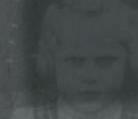

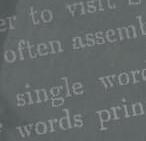



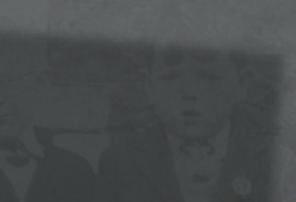


















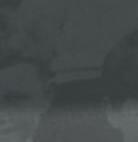















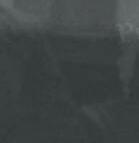




























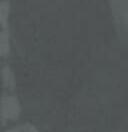


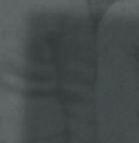

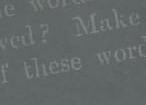





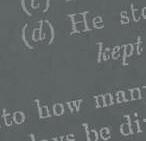



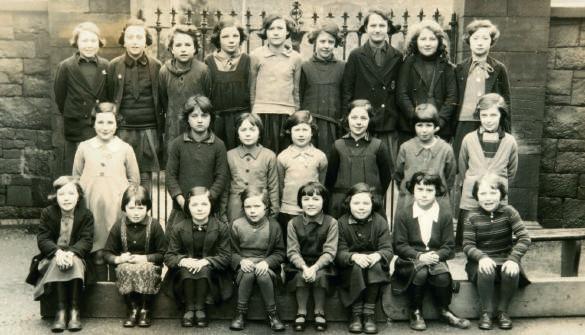



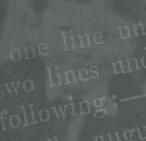
GOING TO SCHOOL IN COUNTY DOWN

This project has been funded by the European Union’s PEACE III Programme, managed by the Special EU Programmes Body and delivered by North Down, Ards and Down Councils’ Cluster.

 Published 2013 by Down County Museum
Published 2013 by Down County Museum
First Edition
First Impression
Copyright © Down County Museum


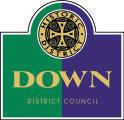
Copyright has been acknowledged to the best of our ability. If there are any inadvertent errors or omissions, we shall be happy to correct them in any future editions.
All rights reserved. No part of this publication may be reproduced, stored in a retrieval system or transmitted in any form or by any means, electronic, mechanical, photocopying, scanning, recording or otherwise, without the prior written permission of the copyright owners and publisher of this book.
The authors have asserted their right under the Copyright, Designs and Patents Act, 1988, to be identified as authors of this work. A catalogue record for this book is available from the British Library.

Designed by April Sky Design, Newtownards Tel: 028 9182 7195 Web: www.aprilsky.co.uk
Printed by W&G Baird, Antrim
This project has been funded by the European Union’s PEACE III Programme, managed by the Special EU Programmes Body and delivered by North Down, Ards and Down Councils’ Cluster.

Introduction

This booklet has been produced during the course of Down County Museum’s PEACE III community history project which has been funded by the European Union’s PEACE III Programme, managed by the Special EU Programmes Body and delivered by the North Down, Ards and Down Councils’ Cluster. The aim of the museum’s community history project is to build positive relations between and within communities in Down, North Down and the Ards, through groups participating in a range of learning programmes. The project seeks to explore issues of cultural and community identity and diversity, examine the beliefs, customs and traditions of different communities and create opportunities to address issues of sectarianism and racism.
The museum is working with a number of groups to achieve this by examining five distinct themes. This booklet is part of the intergenerational strand which seeks to bring people from different communities and of different age groups together to increase understanding of the achievements and experiences of people of all ages in County Down.
This booklet has been created by three primary schools from County Down: Downpatrick Primary School, Millisle Primary School and Our Lady and St Patrick Primary School, Downpatrick. Older adults in the community, including past pupils have made a great contribution. The Reminiscence Network of Northern Ireland have conducted interviews with these people and the information gathered is used in the booklet. The booklet provides a fascinating account of schooldays and shows the common experiences of children today and in the past and the shared heritage of communities throughout County Down and beyond.
Introduction 3 Starting School 4 Daily Routine 11 Out To Play 14 Behave Yourselves 17 Changing Times 20 Testing Times 23 Leaving School 25 Times to Remember 28 Safe Haven 35 The Story of Downpatrick Primary School 38 The Story of Our Lady and St Patrick Primary School 42 The Story of Millisle Primary School 45 Acknowledgements 48 Contents
STARTING SCHOOL





It was the night before when the nerves kicked in. I was panicking. I was wondering: what if it was bad? I would have to go there for six years.

I was trying to comfort myself with toys; so was my mum but I finally dozed of. My mum got my Bob the builder bag ready the next morning and I watched Bob the builder. That morning I was very scared.
My Mum was from the south of Ireland and I knew, even at that early age, that she talked differently and she didn’t do things like other people did but she didn’t care. She told me that I was going to see people. They were going to teach me things that I wouldn’t really know that much about. These were very special holy ladies and they had no husbands and they had no children and I was not to ask them why. My mother had, funny enough, no experience of nuns.





I couldn’t wait to get there, busting to get in through the door but being mindful about the holy ladies. Dying to see them, I didn’t know what they were going to be like. I thought right, I’ll get a good look at them.
… I could spy up in the corner a book case and books and I just couldn’t wait and I thought I wonder when she (the nun) is going to let us go into the book case.
4 STARTING SCHOOL
Kate Hannah, e Convent of Mercy Primary School
My teacher had this doll called Molly and I would hold it until I stopped crying- she was nice and cuddly.
Claire Morrissey, Our Lady And St Patrick Primary School
Jack Hamilton, Downpatrick Primary School P7
Giilian McCormick, Nigel Keenan and Julie-Ann Walker beside the Wendy House, 1982
I think my mum was sad because she didn‛t want me to go.
Reece Mathers, Our Lady And St Patrick Primary School
I was almost 6 when I started school. My parents were very democratic and they consulted me about when I would like to start. Perhaps, on reflection, they were ahead of their time and I remember on the very first day I went to school, I was taken by an older girl. She was about 14. Her name was Mena Fitzpatrick. Mena collected me and delivered me to school. The school was a 2 room school with a coal fire, behind each teacher’s desk of course. There were 2 teachers in it.

Moving to The Boys’ Primary, I remember my first teacher in that school. It was a Brother Ignatius. He was a very good teacher. Things seemed to be much more serious in the school. There was a very serious programme of work to be done and we would have prepared for tests – intelligence tests to verbal reasoning tests and a written paper in English and arithmetic.


I remember doing a Christmas test and I got 1st in the class and I got a prize. I got a harmonica, the only time in my life.
Pat Higgins, Legamaddy Primary and St Patrick’s Boys’ Primary School












The memory I have is that it was a Nissan hut, the P1 classroom and there was a big black potbelly stove in the middle of it; that was how they heated the room. There were little seats round it and that is my memory of that first day, that big stove.
I had a bow in my hair because my mum was very fond of putting big bows in our hair and I probably wore a dress. Mary Lowry, Millisle Primary School
I was cuddling up to my mummy – my mum‛s eyes were tearing up – my mum said she was going to the toilet but she was actually going home – then I calmed down.
Rachael McAteer, Our Lady And St Patrick Primary School
STARTING SCHOOL 5
Lindsey Beckett’s Mum saying goodbye as she starts school in Downpatrick Primary with Mrs Wilson, 1990
Infants boys class, Convent of Mercy, 1940
My first day at school was with a teacher called Mrs. Leake. My memory is of a house and being able to dress up as witches. I went into the house to play with the children who were already in reception. I remember being quite nervous because initially, I didn’t want to leave my mum and I sat on her knee for a wee while and eventually then I was able to go and dress up and have a wee look around. … I remember I did cry and I do remember being given a peg with a wee picture on it but I can’t remember what my picture was. You would hang your gutty bag on your peg.
 Hazel McCrea, Millisle Primary School
Hazel McCrea, Millisle Primary School






The night before I started school I went to bed early. I couldn‛t sleep because I was excited and a little scared. When I got up the next morning … My uniform felt a bit strange. I had never worn a tie before.


 Ian Holland, Downpatrick Primary School P7
Ian Holland, Downpatrick Primary School P7
I think the first day we went, I arrived home again before lunch time. I probably run out to the door and then home again…
There was a small girl and I must have known the girl and both of us left and went home but the parents brought us back round again. We slipped out … I don’t think we did it again you know.
George Ca rey, Bonecastle Primary School and St Patrick’s Boys’ Primary School
We went to school in my mum‛s car. On the way there I wondered if I would make new friends. I thought about my friend Katie who was at my old school. I missed her a lot.
When I got there I met my teacher Mrs. Cooke. She was a lovely teacher. All the children seemed nice and friendly. Our classroom assistant was called Mrs. Maynes. She was lovely as well.
Louise Kimpton, Downpatrick Primary School P7
6 STARTING SCHOOL
P1 class, Convent of Mercy, 1981
I remember running into school, I just lived round the corner from the school and I can remember running down the path, and straight in and into a Wendy house. That is my most vivid memory and not even saying goodbye to my mum… I was of the time when there was no school uniform so, probably for the first day I was put into something good. I remember a tartan skirt and I can remember being dressed up to go my first day. I can remember there being toys and the desks and that and the milk bottles sitting out with our milk, and straws. That morning I saw nothing but that Wendy house.
Gillian McGimpsey, Millisle Primary School




The night before I was so excited I couldn‛t wait. I packed my bag with stationery; I tried on my uniform and hung it up. My mum read me my favourite book: What Shall We Do Blue Kangaroo! Next day I was so thrilled. I put on my uniform after I had my Ready Brek. I sat on my beanbag and watched Charlie & Lola. For the walk to school I had a horsy bag so I jumped over the pavement cracks and pretended that I was a show jumper. When I arrived at school, I wasn‛t clinging to my mum...When I look back on that day I wish that I was little again.
Jade Kelly, Downpatrick Primary School P7







I was the eldest – it doesn‛t mean I never felt small. I didn‛t want to go – I felt nervous and very, very small. I felt my childhood was coming to an end.
 Beth Mc Dowell, Our Lady And St Patrick Primary School
Beth Mc Dowell, Our Lady And St Patrick Primary School
My first memory is of me and my friend sitting in the P1 classroom and there was a big yellow teapot type thing but it was like a house. You opened the teapot out... I remember being scared of teachers … my parents made it so that I was wary of the adults in the school… you had to be good or they were going to be cross.
Gemma Vaughan, Convent of Mercy Primary School


STARTING SCHOOL 7
P1 class, Millisle, 1958
Betty Kelly on her first day at school
I started there in the early days of the war. And one of the memories that my mother told me was when she took me to school. I was the fifth in a family of six and I had three sisters at the top end of the family. The youngest of those three was 10 years older than me. So when my mother took me to start school at Southwell Primary school the principal asked my mother, “Is this an evacuee?”
Anne Ferguson, Southwell School

My Mum felt very proud of me for going to school.






Ronan M C Kinney, Our Lady And St Patrick Primary School



My big brother was 7 years older than I was so he was at the upper school and he took me by the hand and marched me up the back of Bridge Street, up to school. When we got to the school gates, I pleaded with him not to take me in and to let me go home again. He took me in, Miss Ellis let him sit with me for 5 minutes, and then he had to go on into the big school, which was next door to the infant bit.
Bobby Skillen, Southwell School, Downpatrick
When my parents left, I was still a bit scared but felt more welcomed as there wasn‛t as many people watching me.
Alanna Crane,Our Lady And St Patrick Primary School
8 STARTING SCHOOL
I was clinging to her hand – people crowding the hall –then I felt comforted knowing I had some friends.
Niamh O‛Neill, Our Lady And St Patrick Primary School
P1 class, 1979-1980 Downpatrick Primary School
In P1 when I walked in the door everybody was looking at me – I asked my dad, “Do I really have to go in here?” – he said, “Yes.”


 Eoin Douglas,Our Lady And St Patrick Primary School
Eoin Douglas,Our Lady And St Patrick Primary School
I remember the very first morning getting up and getting the school uniform on, the excitement in the house. My friend John Taylor and his mum and dad came down and we all walked, a big posse of us all walking down to school together. There was quite a number of us living in the locality all going down to school.
We didn’t have that far to walk to school; it was probably a couple of hundred metres to the school from Knocknashinna to the school in St Anne’s Avenue. I remember just walking in and going “Wow”. I saw the big doors and the big classroom and all these people and everyone going around; the classroom teacher, Miss Cahalane coming and being there and meeting us with a big smile on her face. It made us really feel at ease as soon as we walked in.


There was a big competition very, very quickly to see who could build the highest blocks without it falling over. We all got into that very quickly and I think, because of that, we didn’t notice our parents drifting away and that was really a very happy memory of the first day at school.
Paul Gilchrist,St Patrick’s Boys’ Primary School

P1 class, Convent of Mercy about 1976.




As a teacher, the first day was mad. In those days, the whole way up the school, the class that had been there the previous year had to graduate, so what happened was that my new P1’s were there, 38 of them with their parents and the previous P1 ready to move to P2 were also there. ... So I had about 60 children and all their parents in my room and I was on my own. In those days, you didn’t have a classroom assistant… In fact, once the old P1’s had moved on and I was left with the children I was fine.
Rosemary Wilson, P1 Teacher, Downpatrick Primary School
On my first day of school I remember the night before I was worried. However when it happened and my Mum was crying, I was just thinking, “Why is she making such a big deal?” I was so pleased with my shiny new shoes and smart navy skirt and top. I wasn‛t so keen on the tight tie though.
 Treya Dorrian, Downpatrick Primary School P7
Treya Dorrian, Downpatrick Primary School P7
STARTING SCHOOL 9
I can remember a mix of excitement about starting school and the nerves and butterflies in my tummy about going… As we were waiting to go in my mother said to me, “There is Mrs Pentland with the twins.” They were a boy and a girl who were also starting school. The girl was called Susan. She became my best friend that first day and we have been best friends ever since. So I made a lifelong friend on my first day in P1.

 Gill Kimpton
Gill Kimpton
My sisters were already sorted - my Mum told them to look after me.


















Ania Crolly Kelly, Our Lady And St Patrick Primary School
We didn’t have a uniform. But to school I would have worn short trousers. Long trousers were only worn by men in my days, even up to the age of 14 boys wore short trousers and jumpers or ganzies as we called them, just a sweater.
Pat Higgins
10
STARTING SCHOOL
I was very nervous - I thought no one would like me
– we had a doll called Molly - we liked her ginger hair
and blue jumper, red jeans and black shoes. Colleen Curran, Our Lady And St Patrick Primary School
RebekahHyndman,with hersister,Emmastarting school in 1996
Mrs Wilson brought in a lamb to meet her P1 class
DAILY ROUTINE

We used to go for nature walks and things like that. … You maybe got out to Struell Wells. You walked out there and you brought your milk. Each person brought their own milk and you would have took your lunch out there and walked round the well and identified birds and nests and things like that. Beside the school there was a swamp, marshes. We used to go out in the summer time and get the tadpoles. We would have brought them back to school and in Brother Raphael’s classroom and then they would have turned into frogs and he would then have put them outside.
George Ca rey
At the end of the corridor there were these big books … they were gospel stories and they were all on a big string hanging on a coat stand or something. Inside they were lovely. They looked like paintings but they were on like a linen background … great stories and the colours were quite vivid. Everybody sat down and listened to the story.
Kate Hanna
There was just an ink well on your desk and a pen with a nib on it and pencils.
















 Rita Gamble, Millisle Primary School
Rita Gamble, Millisle Primary School





We had assembly every day I think, from what I can remember. We had prayers and all stood in our lines and there were big hymn books that were given out. We all sang the hymns and the teacher played the piano. Gemma
Vaughan
The subjects you would have covered were generally the same. Every morning when you came in you did your spellings and your times tables. You had to know them. Every morning you were tested on them. You did your English work, your comprehension, some difficult passages and poetry. Prose, stories and maths, would have been in the morning time. In the afternoon it would have been some science, geography, history ... we always looked forward to PE. We would have had PE maybe twice a week.
Paul Gilchrist
DAILY ROUTINE 11
I can remember having a wee suitcase, a wee brown suitcase and that was what I carried my stuff in. You probably had the reading book home with you and your homework book and then they came back when you were finished with them. We maybe even shared sometimes because we didn’t have enough.





















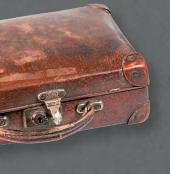
 Mary Lowry, Millisle Primary School
Mary Lowry, Millisle Primary School
It was the highlight of your day if you got cleaning the blackboard with the wooden duster. But if it was really bad you would have got a wee bucket of water and washed it down with a cloth.
Bobby Skillen
Mr Walker when we started was very, very big on dictionary work. You had your sheets made out and you had to find the words in the dictionary and learn the meanings of the words and how to spell and how to pronounce them. After that you were given a reading sheet maybe once a month and you had to learn and recite or say back to the teacher the words that you knew.
Gillian Mc Gimpsey, Millisle Primary School
I can remember that I just really enjoyed his classes (Mr. Walker). He just made them come alive you know and he really took an interest. I can remember that it was either once or twice a week we listened to the schools’ programmes on the radio. Then it was a big sort of wooden frame but with a wee round mesh speaker in the middle and at a set time, we would have listened to that. We didn’t have ways to record it then so you had to listen to it at the time.
We learnt that the letters of Belfast all stood for an industry in Belfast B for biscuits, E for engineering, L for linen, F for factories S for ships T for tobacco
I liked the I.C.T. work with Mr Maginnis. I loved the P.E. and the topics. I liked Art, a bit of Science and History. The topics I liked were flight in nature, Vikings, Egypt, and Victorians. Mr Maginnis helped us organise ourselves.
Tom Martin, Downpatrick Primary School
12 DAILY ROUTINE
Hard at work in the classroom, 1982 Millisle Primary School
Mary Lowry, Millisle Primary School
I remember one of the Chestnutts. I remember her making baby doll pyjamas. I remember Lindsay in her baby doll pyjamas. Pants and the loose top. You always associated things with certain children, I suppose. Sewing was quite involved. You know there was a syllabus for the sewing and there would have been a syllabus for sewing and knitting for quite a number of years.
Anne Ferguson
In Downpatrick primary, we did change teachers, we went to the P1 teacher who was Mrs. Ferguson, and she taught us to do sewing and knitting.













I can remember one day in her class, we were all sitting round the tables and I don’t know why, but we started to throw the wool at one another. It got all tangled up and Mrs. Ferguson was not pleased.
Rosemary Ferguson, Inch Primary School and Downpatrick Primary School



I suppose during my teaching days one important thing was to give children experiences. I wonder do any of the past pupils remember. I brought a bantam hen in. I had a quiet room off my room over in the primary school and I kept the bantam hen in there.
So I got eggs from the lady who loaned me her bantam hen. But we brought out the eggs and the chicks and that was a wonderful thing. There was so much writing and storytelling all around that. Rosie was the first one and that was brought into the classroom every morning with a couple of sods.

I can still remember the silence when we listened for the chicks tapping on the shell. I can still feel the sounds I suppose.
It was a great time. And then we kept them you know for a certain time in a little run, and then I took them home.
Anne Ferguson
I suppose I can visualise the room better and the teacher. The teacher sat up on a raised platform to the side of the classroom. The fire in the classroom would have been up at the front as well. She would have had P5 to P9 in those days because the children would have been up to age 14 in the school.
Anne Ferguson, Pupil and teacher in Southwell School, Teacher in Downpatrick Primary School
To go for your dinner you had to walk from the Southwell School through down to the lower floor of the church hall in Church Street for our lunch. And Mr. Thompson the butcher had the contract with central meals kitchen in Church Street to deliver the dinners round all the different schools. They delivered to Southwell Boys, Southwell Girls that was in the same building but their classroom was up the stairs in the church hall, and also the Back Lane which is now the Presbyterian Church hall... The dinners were lovely... the ladies in the new primary were a Mrs. McCoubrey and Mrs. Magennis. And because I was a lovely big fella I always got seconds before anybody else got them.
Bobby Skillen
DAILY ROUTINE 13
Mr Walker and class, 1968 Millisle Primary School
OUT TO PLAY
Red Rover – It would have been where we got into 2 teams and we had to hold hands and then we would have chanted you know, red rover, red rover. We call and then we would call somebody from the other team over and they would have to try and break through our arms... One time my friend fell into the wall and had to get stitches in her chin and that sort of put a stop to that game.
Gemma Vaughan



I play with my best friend in the playground. I like to play skipping in the playground. It‛s quite fun skipping when it‛s fast.

 Julia Patterson, P5 Millisle Primary School
Julia Patterson, P5 Millisle Primary School
In the playground there were bikes, hula hoops, tricycles and even bowls that you spin around in. These were all fun to play with. We had an adventure playground built when we were in P3 and we got the honour of being the first class to ever go on it. At break and lunch time the older children who act as “buddies” came up to our playground to help look after us and help us.
 Rebecca Casement, Downpatrick Primary School P7
Rebecca Casement, Downpatrick Primary School P7






We kicked the football about, at different times of the year. For example, you probably played marbles and then maybe round Halloween time you played with the conkers. Maybe Grand National time you would have had piggy backs like riding a horse… In the school it was football probably and maybe tig or rounders or that type of ball game.
George Ca rey
When I was in P1 we played skipping and we also played with the hula hoops and cars. Sometimes we got to climb on the jungle gym with its climbing frame, tyres and the wobble bench which was my favourite. All the boys and girls play together which is great most of the time. During the summer, we can go down the grassy bank and make daisy chains.
 Jordyn Wilson, P7 Downpatrick Primary School
Jordyn Wilson, P7 Downpatrick Primary School
There was a time when everybody brought their marbles to school for a few weeks and we played these marble games. And you know some people had many marbles that their parents had bought them. Then there were others, me included, we didn’t have very many, we just saved them from year to year because we knew the marble time would come.
I remember the privilege of being the older girl and going down to help the little ones, and loved that – the responsibility of being able to show them how to play these games. We had loved them ourselves and we loved to go and show them to the little ones who were very impressed that we could throw these two tennis balls.
Gill Kimpton
14 OUT TO PLAY
1979 School Yard Convent of Mercy Primary school
Having great fun in the playground, Downpatrick Primary School
The school had a big green to the left hand side and you used to play “Churchy one over”, where you got say maybe 6 or 7 fellas on each side. One stood against the wall and he made like a wee horse. One up against each other, like a rugby scrum and then in a straight line and everybody else had to get on top. You had to jump up and if they kept you up, that was good, but if you fell they had to split you out again. It was just simple but it was good fun.
Mervyn O’Neill
We have a fabulous play park in our playground. I like it in the play park. It‛s fun. I especially like the climbing wall.


Ben Lally,P5 Millisle Primary School

I like to play penalty shots in the playground.



Kyle McClean, P5 Millisle Primary School

German jumps: we had elastic bands all strung together and 2 people would have had the elastic bands around their ankles and then you jumped over and pulled the elastic bands and made different shapes with the elastic bands. Then you went home and put 2 dining room chairs out to practice before you came back another day so that you got better at it.






 Gillian Mc Gimpsey
Gillian Mc Gimpsey

In P1 I played with the buddies and my big cousin, James Dean. We played catch the buddies and skipping. Now I am a buddy and I look after the P1s, P2s and P3s. When I was in P1 we had a different adventure playground which was very old. Our new adventure playground has a climbing frame, slide and even a wobbly bridge.
Ellie McCreesh, Downpatrick Primary School P7
Having great fun on day,sportsMillisle


I remember playtime being fun. Another thing I loved to play with was the parachute. The parachute has lots of colours and is in the shape of a circle. The game was to keep the ball on the parachute but it was too hard. It was a marvellous game.
Claudia Fitzpatrick, P7 Downpatrick Primary School
OUT TO PLAY 15
At the top end, they would have been playing cricket. On the wall they would have just drawn the stumps on the wall. We would have a ball and bat and there was half the wall where a lot of the boys sat along the top of the wall waiting to come in to bat.
One of the greatest cricketers Downpatrick ever had was Noel Ferguson, and Noel went to the school with me. And Noel was the man who you wanted to bat. He was very good. As I say if you were picked, you liked to be picked for Noel’s team because you knew you were going to be on a winner. ... He went on to play for Ireland.
I don’t remember there being equipment for us to play with as such. I do just remember playing tag and spies. I remember the girls would be in groups and we would spy round the corners at each other and try to catch each other and things like that. I see children doing it in the playground now and it just reminds me of that you know.
P1 Andreanna
used













mini
On a wet day break we play with puppets. We play cool math games on the computer and I love it, so it‛s not too bad to have a wet break-time!
Marbles: I remember just always standing watching them and then when I was asking could I have marbles I was told they were just for boys.
P1 enjoying outside play, Downpatrick Primary

16 OUT TO PLAY
Joe Mc Comb, Southwell School
Hazel Mc Crea, Millisle Primary School
I play chasies or dodge ball in the playground.
Jake Donaldson, P5 Millisle Primary School
I miss the bubble game – which is “chasies” but there is two dens.
Tiernan O‛Neill, Our Lady and St Patrick Primary School
I remember in
and I
to play tag and
moto cars and sometimes we still play these games until this very day ... if you don‛t you will lose your imagination skills.
Chelsea McCabe, P7 Downpatrick Primary School
James Reid, P5 Millisle Primary School
Rita Gamble
BEHAVE YOURSELVES
Well in primary school, it was probably just a ruler and later on, probably, they used a larger cane… I got six of the best one time… My hands would have been marked. Well you would never really have said at home because you could have got hit again. If you got hit you just kept it to yourself, you know.




 George Ca rey
George Ca rey

We have a book called a merit book we can earn stars and get them taken off us if we forget something or be bad... we also get grounded when we misbehave ... we have to stand in a place with bars around it and a gate.
Kyle McKeever, Downpatrick Primary School P7
People get rewarded for good work; if you win the Down Dynamo you get your picture put up on the wall where every one can see it. If people are being bold or nasty they could get their behaviour in class or out of class merit taken off them and they could be grounded from break time and lunch time.



 Ellie Coburn, Downpatrick Primary
Ellie Coburn, Downpatrick Primary

School P7

Master Kane … He would have struck the desk with his cane or his stick or he may have poked you a bit but he never really seemed to slap or anything like that. He was ahead of his time.
Pat Higgins

The great thing about the school was there was a great relationship between the teachers and the pupils. The pupils accepted the rules. We wrote the rules actually. This was a new thing, at the beginning of the year we used to draw up the rules within the classroom. The children would have an input into the rules and we would put them up on a special white board. I would always go down the line and say look you know that behaviour is not acceptable within the class or within the yard… The children knew the score.
Brother
Christopher Kelleher, Teacher, St Patrick’s Boys’ Primary School
My first teacher was very strict … You weren’t allowed to speak or do anything. If you did anything at all out of place she would have been down on you and you would have been in trouble. And if you did something wrong she would have made you do it over and over again... As I say, the kids don’t get that discipline now. You had to rhyme off your times table and if you made a mistake in your sentences she would have made you do it again 10 or 15 times.
 Mervyn O’Neill, Millisle Primary School
Mervyn O’Neill, Millisle Primary School
Miss Williamson had a small cane and there was a bit of a swish of it and she would have wrapped you over the knuckles quite often too.
If she didn’t have the cane in one hand, she would have wrapped you over the knuckles. But it wasn’t very often. She thought it wasn’t hard enough for the fellas.
Mary Lowry
You get happy faces by finishing maths, literacy and also for homework. I have won lots of times.
Stephen Flaherty, Millisle Primary School
BEHAVE YOURSELVES 17
Ballymoney was much stricter. I remember in my first couple of weeks, some boys were throwing rubbers around the classroom and the teacher got them up to the front and slapped their hands with a ruler. I had never seen that happen in Millisle. I think if you were talking too much, you might have got put in the corner.
Hazel Mc Crea, Millisle Primary School
Down Dynamo
Name: ________________________








Class: _____ Date: ___________
ww
This Dynamo Award is for ___________________________
If you do good work you get to play games and go on the computer. For bad behaviour you get sent to the Principal, you get reduced playtime.
If you‛re good, you get Golden Time. We have a reward system called Reach the Stars on Cloud 9 – so you can colour in a cloud and when you have nine clouds, you win rewards.
If your class is good in the yard you can win extra playtime.

You get rewarded with a Homework Pass or a Computer Pass. Pupils from Our Lady and St Patrick Primary School.


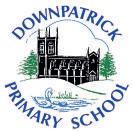

Signed: ________________ Teacher
Signed: ________________ Principal
Down Dynamo certificate example
I got lines many a time. And I remember in secondary school actually finding a bit of carbon paper in the house, and instead of 100 lines I wrote 50 lines and brought them to school and said, “Well I have done my 100 lines”. The principal, Mr. Jackson, said, “Oh you cheated, you used carbon copy paper. Now do 200 lines proper for tomorrow night.”
Bobby Skillen, Downpatrick
We had a male principal. Our principal had a cane, and he carried the cane around with him, as he would be on patrol along the corridors. He carried it behind his back and I have a very clear mental image of him walking and carrying this cane. He was a tall man and stern looking. I know now that he is really a gentleman, but to the child’s eyes, he looked stern. We were frightened and we would have been frightened to have been sent to his office. It was at the other end of the corridor and we heard stories that he used the cane. And you know there were people who had been caned and had red marks on their hands.
Gill Kimpton, Downpatrick
Mrs Patterson has a Happy Face Chart for Us. Our happy face chart helps us work. If you get twenty happy faces you win and get a prize, but if you get three sad faces you are out of the game.
Jasper Robbins, Millisle Primary School

18 BEHAVE YOURSELVES
Only once, I remember getting smacked once with the ruler because I laughed at the minister and that was in P2. I thought he was the strangest looking person coming in with this thing round his neck and I laughed and got slapped with the ruler over the hand. But apart from that I never had any problem.
Gillian Mc Gimpsey



The happy face chart is a chart that if you finish your work or do something good you will receive a happy face. Whenever you get 20 happy faces you have won. I win it lots of times!

 Harry Carswell, Millisle Primary School
Harry Carswell, Millisle Primary School

They didn’t let anybody off with anything that was just it. Not like it is today ... You had more respect for the teachers because you hear of kids now cheeking the teachers and all. That’s what’s wrong, you wouldn’t have given cheek to Fred Walker, I’ll tell you, or you would have been put in your place very quick.
Mervyn O’Neill
We were very keen that children would be responsible for their own behaviour and to that end, we adopted a scheme called Promotion of positive behaviour where children were rewarded for good behaviour and there were penalties for poor behaviour. On a Friday afternoon we used to have golden hour when everybody could do whatever they wanted, within reason in the school, like “Can I use the computer, can I get the lego out, can I do this, that and the other.” So if you had a penalty from during the week you missed out on golden hour and you sat on a chair and you read and got extra work. That worked a treat, it really did.
 Arthur Greenwood, Former Principal, Downpatrick Primary School
Arthur Greenwood, Former Principal, Downpatrick Primary School
Golden time is when we can play on the whiteboard or the computer or do whatever we wish, within reason! I love Golden Time.


 Kenzie Adams, Millisle Primary School
Kenzie Adams, Millisle Primary School

'Traffic lights' help us behave well in school - Our Lady and St Patrick Primary School





We were punished by being grounded. This meant when we were bad we would have to stay in school during lunch time or break time. If you were grounded it could be because you have lifted your feet or hands to people, saying bad words or calling people names.
Kate
 Hannah
Hannah

You had ten spellings every night and I’m not talking about Janet and John. I’m talking about adjacent, I always remember that because I got 2 slaps for it. Adjacent you got ten every night. You were in the real world when you got up there (Upper Primary). Very strict.
Downpatrick Primary School has many rewards such as Down Dynamo … Head Master‛s award. This is awarded for exceptional behaviour … these can be won for being diligent, responsible and forgiving.
James Ross, Downpatrick Primary School P7

BEHAVE YOURSELVES 19
CHANGING TIMES











We came in, we sat at our tables, you learned what the teacher taught from the front, and you sat at your desk. And the only time you left your desk was when you went to do a reading group with the teacher. I remember just being allowed to write on the chalkboard occasionally. You know when it was your turn to go up and do a sum or something. You were able to go up and you kind of felt like the teacher for a wee minute, you know.



 Hazel Mc Crea
Hazel Mc Crea
We used to go into the convent at Christmas to see their crib and the figures. They must have been nearly life size and it was better than Disney, you know. Real straw and it was kind of like, “Where is the child? Why haven’t you got him in and what are there three wise men doing over there?”
Kate Hanna
Master Kane. He had a great interest in horse racing, so much so that when we played racing at lunch time, he would have marked a furlong on the road for us so that we could race a furlong. He also was very keen to hear the results of big races and on that day on reflection, it would have been around the time of a big race that we would have had nature study. And we would have walked to the plantation at Oakley. He would have nipped into the local blacksmith’s shop, Joe McCormick’s, to listen to a race on the radio or to hear the result.
20 CHANGING TIMES
Pat Higgins
A visit to Short Brothers with Mr Walker, Millisle Primary School
‘Snow-white and the Seven Dwarves’, 1966 Millisle
I might read the life of the saint for the day if it was appropriate or there was a message for the children. The children could come in any time from 8am on because there was great supervision in the yard and parents who were going to work left them off and knew they would be looked after. We always had teachers willing to do duty and they played a set amount of informal football, in the yard in their own disciplined way. Then you went to class. I always had a reflection before prayers. The children seemed to like that, you know.
 Brother Christopher Kelleher
Brother Christopher Kelleher
The people were lovely, farming folk and lovely country kids. You would go out in the evening and there would be a bag of spuds lying up against the car that somebody had left for the Master or a pair of pheasants hanging on a car aerial that somebody had shot and left for the Master. The Master in those days, you know, was still a big deal. I used to get people coming in to read letters you know people that couldn’t read. (They) would come in and say I have a letter from a solicitor here, could you translate this for me. That was lovely you know but the days of two teacher country schools are gone.

 Arthur Greenwood
Arthur Greenwood






I just loved Mrs. Patterson and she taught us then in P5. It was Mrs. Patterson that got us all involved in doing the speech festival in Bangor and encouraging us and teaching us how to do speech and drama and saying poetry.



That was something that I had never had any experience of. I have never forgotten that and that has really been the basis that I now speak at various church groups and things like that.



 Hazel Mc Crea
Pat Higgins
Hazel Mc Crea
Pat Higgins
The inspector then would have arrived and the school attendance officer would have arrived. I remember he would have taken a particular interest in some of us because we would have got 2 weeks off in the autumn time to gather potatoes with the local farmers. We got paid for this and I remember the princely sum of £5 for a week working from 8.30am to maybe 6pm at night. But it was heavy going. Some of us would maybe have stretched the normal time and stayed off a little longer so the school attendance officer came and he didn’t seem very pleased. His name was Mr Savage, I remember.
We had three senior classes in the early years you know; there was a great interest in the school on extra mural activities. In games, hurling, football, quizzes, concerts and music. The children got a great chance because we had a nice green field and there was great commitment by the lay teachers taking games after school and the children looked forward to it. You saw another side to the children after school, outside the classroom, you know.
Brother Christopher Kelleher
CHANGING TIMES 21
Convent of Mercy 1976
I think these little ones come into me, to my care and what I have to give them is how they see school for the rest of their days. If I can make school fun, whilst learning, and they’re happy and very confident with me and the whole school set up, then that is what would be more important to me than the actual physical teaching.
I am now teaching children of children I taught years ago and it is lovely to have that contact with the parents that I knew. But it is very hard to get them not to call me Mrs. Wilson. So I also think it is nice to put that trust in me and bring their own children back…
Rosemary Wilson, Teacher, Downpatrick Primary School





I remember a teacher in P2 called Mrs. McReynolds. When it was your birthday, she drew a lovely big birthday cake on the blackboard. She then cut it into slices, slices of it and then you got to pick maybe some of your friends that you wanted to have a slice of the birthday cake that she had drawn for you. She was lovely.
Hazel Mc Crea
I think it is more formal. They know they are doing comprehension today or their tests, spelling tests when they come in the morning, their comprehension, their numeracy. I think the formality is much more organised. I can’t remember going in on a day and knowing what I was going to be doing that day, apart from your tables. It was just more relaxed.
Gillian Mc Gimpsey



There was a lot of spontaneity of teaching in those years, where just whatever might have arisen on a particular day. I remember one day over in the school a fox went past the window. We then had a wonderful day, writing about foxes.





 Anne Ferguson
Anne Ferguson
I suppose one of the big things I see changing is technology. I made everything and wrote it out for the children and for a number of children we used carbon paper. So that was all done in the evening for maybe six or eight children. You would have needed to do like three at once. But I see that as a wonderful thing now we have photocopying.
Anne Ferguson, Teacher, Southwell School
22 CHANGING TIMES
Visit to Folk Museum
Our school helped us by taking us in over the breaks, and helping us with tough questions and doing papers every Tuesday as well as letting us come to a club for 1 hour after school to help us revise. We also had to do a practice paper over the weekend but I am glad I did now I have got a good score.
Treya
Dorrian, Downpatrick Primary School P7


TESTING TIMES
I didn’t like the 11 plus because I got a lot of pressure from my grandparents. They would have made it a point to try and force me to do practice papers a lot. I just was very stressed out about it. I remember on the day of the exam I was sick, I was vomiting that morning. I ended up failing it and ... feeling like a failure ... I ended up having a great time in the secondary school I was in.
Gemma Vaughan
I loved the verbal reasoning … we did a test every morning… I loved it … trying to figure all that out. But I think that was when you got further up the school because you were doing it then for your 11 plus.








 Gillian Mc Gimpsey
Gillian Mc Gimpsey



When I did the transfer test I was confident that I would get a very good score in the test and I‛m so proud of myself.
Andreanna Edgar, Downpatrick Primary School
P7
We need to do lots of work especially tests for high school.
Eoin Douglas, Our Lady and St Patrick Primary School
TESTING TIMES 23
We were preparing for the 11 plus. We heard that it was going to be in Down High. Well I mean, the only protestant that I knew was a friend of my mothers. I was thinking I might not get back again so I better take a good look round, get all the news, and see what it was like. I looked out the window and saw these girls playing hockey. I had never seen a hockey match in my life but I had read about it. You know in Enid Blyton. But here I’m looking at the maths paper and do you know to this day I often wonder, what was the invigilator doing, because I was sitting beside the window looking out. I didn’t touch my test paper… I’m watching this hockey match.
Kate Hanna
I was held back a year to repeat and that was another thumping I got, because when I went in to do it the second time I just put an X on it because I didn’t want to go to anywhere else except Donaghadee School, where all my mates were. So I just put an X on it and I came back and Fred Walker (Principal) got the word that I had put the X on it and I got another hiding for wasting his time for teaching me for a year.











 Mervyn O’Neill
Mervyn O’Neill
I remember homework probably in P6, P7 and I remember lots of it and how hard it was particularly as we were studying for transfer in P6. I remember a lot of past papers, one almost every night and over the weekends too.
 Paul Gilchrist
Paul Gilchrist
24 TESTING TIMES
I learned a great deal – this knowledge enabled me to do my transfer exam.
Tiernan O‛Neill, Our Lady and St Patrick Primary School
Going into P7 was important to me as it was the year I did the transfer test - I passed.
Claire Morrissey, Our Lady and St Patrick Primary School
LEAVING SCHOOL
We always thought that leaving school is good, but it is not, it is incredibly sad. In P4 my second best friend Benjamin Talec left with his little brother James. Outside Tom, Benjamin and I always played Star Wars. He eventually told Tom and I about what was going to happen, how we were not going to see him that much anymore. I was devastated about the news. In the end we will all leave and leaving isn‛t fun.
Jonathan
Beattie, Downpatrick Primary School



P7



I was excited to get to wear a uniform, that was one of the big things. I would have to go to the shops and buy a uniform. I was excited to play hockey. I even thought I would play rugby. I wasn’t aware that the girls didn’t play rugby. My brother had rugby boots and I thought I would inherit those and I would play rugby too.




 Gill Kimpton
Gill Kimpton
Going to a new school will be difficult because you are going into a world of the unknown and you are saying farewell to teachers, friends, family and good memories. Then you meet new teachers and pupils. I will miss my classmates who are going to other schools.


Tom Martin, Downpatrick Primary School P7
I attended the Southwell School and I left the school 2 months before my 14th birthday. I remember leaving because I couldn’t get away quick enough… I felt grand because I was very much into farming at that time. And we had a donkey and cart, and I would have taken out this donkey and cart to do wee odds and ends. So I was delighted to get away from the school.
Joe Mc Comb
LEAVING SCHOOL 25
1978 June Presentation on retirement of Sr Bernadette
Cup winners, 2011
It will be just like starting P.1 again. I will be sad on leaving my primary school but life will go on! On moving school I will be sad and then I might just forget about primary school and on the last day I might be tearful about leaving my friends.




 Abigail McKeever, Downpatrick Primary School P7
Abigail McKeever, Downpatrick Primary School P7

We had a leavers’ mass. We were all very close. Even now I would still talk to a lot of girls that I went to primary school with. The leavers’ mass is very sad and I remember a lot of people crying and after the mass was finished, that was when everyone would have signed our normal white school shirts. Everybody just went round and signed them with a wee message… we didn’t want to leave.


 Gemma Vaughan
Gemma Vaughan


When I think about leaving I think about leaving primary school, not seeing the teachers and best friends and not seeing familiar faces.
A new uniform, new classroom, new buses but at least some of my friends are coming too. I know for a fact I‛ll cry at the leavers‛ assembly. The thought I‛m most scared of is growing up. I am sad yet excited.
 Alex Swaffield, Downpatrick Primary School P7
Alex Swaffield, Downpatrick Primary School P7






26 LEAVING SCHOOL
Home time convent of mercy 1978 Off on a trip, 2008
I remember going around saying goodbye to all the teachers. The teacher at the time had a party for us. I just have this memory of clearing out the classroom with the teacher and there was a skip at the end of the school and we brought a lot of things out to it. We had never done that before.



Comments from pupils in Our Lady and St Patrick Primary school
It will be good meeting new people. There will be hard work and hard homework.
Brianne Duffy


There will be new things to try. I look forward to getting a new uniform and riding a bus each day.



 Niamh O‛Neill
Niamh O‛Neill

I will miss my friends who are going to different schools. I am happy for getting into an all girl school.
Alanna Crane

I will miss the kindness of all the teachers. Mrs Vint is the kindest person in the whole school.
Claire Morrissey

Leaving will be an adventure. I am sure teachers will help you with anything you are stuck on.
Ben Curran
It is going to be scary – you are the biggest –then will be the smallest. I am going to miss the girls a tiny bit.
Ronan Mc Kinney
LEAVING SCHOOL 27
Paul Gilchrist
P7, 1986 Downpatrick Primary School
P7, 2007 leavers’ assembly Downpatrick Primary School
TIMES TO REMEMBER










The nativity we did every Christmas. I was one of the shepherds who didn’t have any lines, that would have been more my role. I think I was a shepherd for about 4 or 5 years … There were the shepherds and the angels made up the numbers and gave everybody something to do.
Gemma Vaughan
For the Diamond jubilee in 2012 we dressed up. I was Queen Victoria and my hair was up in a bun. I wore my flower girl‛s dress along with my red pumps. We all had a Jubilee dinner in the hall which was sausages, ice cream and a lot of jelly and biscuits.

Oh for goodness sake, you were nobody if you weren’t in the May procession. You made your First Communion. You had no uniforms, so you made your First Communion and you had a veil. So when it came to the May procession your mummy had to get the veil out. And in those days starch maybe wasn’t that easy to come by. They had to make it out of sugar or whatever to do the veil for the May procession. Kate Hannah

28 TIMES TO REMEMBER
Ellie Coburn, Downpatrick Primary School P7
A ‘fancy dress’ assembly with the theme of ‘Kings and Queens’
Cast of ‘The Doll’s Wedding’, 1942 Convent of Mercy Primary
We had a sports day. It was out the back of the school here, where there are buildings now. There was a great big grass area and that is where all the sports were held. Along the back of the building here, there was a path and that’s where all the parents sat on the chairs to watch all the sports up on the grass bank. I remember races, sack races, egg and spoon, wheelbarrow race and the parents getting up and having a go at something.
Mary Lowry








We were very adventurous. I think Mrs. Patterson brought the adventure to Millisle. She took us to London on a school trip, the P5/6/7. I just remember going to the Tower of London. I remember staying in the hotel. I remember the not very nice food in the hotel and going to Tower Bridge and just really having a good time.


TIMES TO REMEMBER 29
Hazel Mc Crea
Celebrating the Jubilee May 2012, Downpatrick
Celebrating the Jubilee May 2012
Education For Mutual Understanding – That was donkey’s years ago, way








back at the end of the 80’s when the troubles were at their height. Downpatrick and Legamaddy were linked from P3 to P7. It ended with a residential trip. You would take P7 kids from both schools across to England to a big adventure park, a place called Benetton Park… And many years after that the children, who were former pupils, would still come and say to me “Do you remember we went to Benetton Park? Do you remember I was sharing a dormitory with Bernadette. Well she was my bridesmaid at my wedding and we are still mates”. Arthur


 Greenwood, Former Principal Downpatrick Primary School
Greenwood, Former Principal Downpatrick Primary School
Having decided I would dress up as Prince William in a Jockey suit. In addition to getting horse riding boots and an old t-shirt with PW on the back and front, I had to make a whip out of wood. We paraded around the hall so the judges could see what the class costumes were like. Jamie
 Gelston, Downpatrick Primary School P7
Gelston, Downpatrick Primary School P7
We did it (sports day) out where the nursery is now, it was a green. And the parents would have put the chairs and all out. And you would have had like the sack race, and the egg and spoon race. The games really aren’t the same today as they were then. Oh, I won a few things. ... The sack race and the barrel race... The egg and spoon race, and the sprinting, because I loved running.
Andrea Bingham, Millisle Primary School

30 TIMES TO REMEMBER
Celebrating the centenary of the Convent of Mercy school, 1976
Enjoying the ‘100 day’ maths challenge with Mrs Beattie
For the Silver Jubilee Celebrations, the council had a fancy dress parade and my mum made a costume for myself and my friend Susan. My Mum got green fabric and sewed green dresses for us and she got two colours of pink fabric and made petals, and she dressed us up as jubilee roses. The two of us, we were of similar height and we just had our faces with these petals coming out. We won every fancy dress competition we entered because I suppose we were small P7s but we looked quite cute. We walked along hand in hand as these little jubilee roses.
Gill Kimpton




Cycling proficency, 2006







I do remember the Pope coming when I was in P1. I remember that being a big event. There were a lot of the pupils weren’t there and in the gymnasium they had put on a TV. It was about a 16” TV on a big stand. We sat in the middle of the assembly hall and I remember being marched in. There were very few of us in and we were made to watch the pope arriving in Ireland and the pope giving a sermon in Ireland.

 Paul Gilchrist
Paul Gilchrist
For the Queen‛s Diamond Jubilee we dressed up as Kings and Queens. For the outfit I dressed up as King Arthur of Camelot, from Merlin. I had a sword and a big ring. It was the best Jubilee Party ever.
Matthew Crichton, Downpatrick Primary School P7

TIMES TO REMEMBER 31
Patrick the Penguin supports the rugby team!
In P7 we went on a school trip to Keswick in the Lake District and it was fabulous. It was the first time I had been away from home and it was a treat for passing the 11 plus and I was allowed to go to that, but was very homesick the whole time I was away. We went to Derwentwater. … We went on a boat trip down through it… and getting the Kendal mint sugar bars which I’m sure made us all hyper and the teeth rotted. I remember we stayed in a youth hostel … and one of the beds broke. Somebody fell through their bunk bed because it broke.












During the Queen‛s Jubilee Downpatrick Primary school celebrated with activities full of fun. On Monday we made bunting. I used many colours such as red, blue, yellow and green. We also got to make Royal crowns, and mine was gold.

Fundraising
32 TIMES TO REMEMBER
Gillian Mc Gimpsey
James Ross, Downpatrick Primary School P7
Harvest Festival in Downpatrick Primary School
Mrs Wilson with Downpatrick Boys’ hockey team
We were talking about Fred Walker the artist, and his blackboard, I used to have to wash it. Just with water and then when it dried there was always another wee bit left on it. And he would have made you wash it again and wash it again until it was pure black. It would have taken me about an hour to wash the board and it had to be absolutely spotless. Then he would have started and have done a drawing with the chalk and blew it and put it in his hand and it was unbelievable, just with chalk on the blackboard. It maybe would have taken him four or five days to do it. Then the paper would have come in, the Spectator or the Chronicle, and then he used to be in them every year.
Mervyn O’Neill













TIMES TO REMEMBER 33
Downpatrick Primary School NI Hockey Finals 2007 with Mr Maginnis
The cast of ‘Annie’, 2010 Downpatrick Primary School
Mr Walker drew beautiful scenes like this on the blackboard every year at Christmas.
 Banner created by children from Millisle Primary school for the opening of the Memorial Garden.
Banner created by children from Millisle Primary school for the opening of the Memorial Garden.
SAFE HAVEN
Safe Haven is the name given to the Holocaust Memorial Garden in the grounds of Millisle Primary School and a safe haven is what the community of Millisle provided for many Jewish refugees during the Second World War. The seaside village of Millisle in Co Down played its own small part in holocaust history. Their story is an important part of the story of the Millisle community and retelling it has become a vital part of the life of Millisle Primary School.
A small group of Jewish children came to live at a Millisle farm during the Second World War. Refugees from Germany, Austria and Czechoslovakia, they had been rescued from their homes after their parents were imprisoned by the Nazis. This transportation of children, to safety in Britain and Ireland was known as the Kindertransport.
The Kindertransport rescue operation was unique, in that about 10,000 unaccompanied children aged from three months to seventeen years of age were permitted entry into the United Kingdom on block visas.
Frightened and bewildered, the children were put on trains clutching a few precious belongings – they could bring nothing of value. Most of the Kindertransport children never saw their parents or families again.
In December 1938 the first Kindertransport of 206 children arrived from the Hook of Holland to Harwich, on the east coast of Britain.
Other Kindertransports followed, until, with the outbreak of war in September 1939, the borders were sealed, and the Kindertransports ceased. A lucky few of these children had relatives in England; the rest were accepted into foster homes, boarding schools or hostels all over Britain. And some were sent to Northern Ireland, a place of which most of them had never heard.
A hostel was established at Cliftonpark Avenue, Belfast, initially for the older group of refugees. When the Kindertransport children began arriving, nearly every Jewish family, and some non-Jewish families, took a child into their homes. In May 1939, Barney Hurwitz, Leo Scop and Maurice Solomon of the Refugee Aid Committee leased a derelict farm of about seventy acres on the County Down coast.
‘The farm’, as it became known to its inhabitants, was situated close to the village of Millisle, about twenty miles from Belfast. The children arrived from the Belfast hostel in the summer of 1939. They found a few derelict barns and outbuildings, and a dilapidated stone farmhouse known as Ballyrolly House.
Up to eighty people, including the children, lived and worked on the farm at any one time. In all, from the first arrivals in 1938 to its closure in 1948, well over 300 adults and children are believed to have passed through it. It was run as a co-operative farm, patterned on the kibbutz principle; all the children, even the youngest, worked on the farm, and received a shilling per week pocket money; later this rose to half a crown.
The children attended the local school, where the head teacher, John Palmer, sat each refugee child with a local child to help them learn the language. Mrs Mawhinney taught the under-eights.
Friendship
“The Farm”
The small Jewish community of Belfast responded wonderfully to the needs of the young refugees who ended up in Northern Ireland.
The Jewish children integrated well into the local community and Bobby Hackworth, who was 11 years old in Millisle Primary School when the Jewish children arrived, remembered the great fun they had playing football matches every week. Invitations were extended to each other’s concerts. Even if they did not understand the words they could always appreciate a good tune. Bobby also recalled seeing the children in a horse and cart on their way to Donaghadee railway station to pick up goods. They would also have been taken to the pictures in Donaghadee or the travelling concert shows which were held in Millisle during the summer. Bobby, who had a keen interest in local
SAFE HAVEN 35
SAFE HAVEN







STARTING SCHOOL









36 STARTING
SCHOOL
Jewish Children Millisle
Holocaust Memorial Garden Millisle Primary
history, kept in touch with some of the refugees throughout his life and was a valuable participant in the creation of the memorial garden and in passing on the story to the children in Millisle.
Robert Sugar was one of the children. In a heartfelt interview, Robert Sugar, said that after the war he felt homesick, for the town he called home for 10 years: “I didn’t feel like a refugee when I was here. In 1967 I was in London and was homesick for Millisle – and that felt unusual,” he said. “In world history, as Jews, we have been excluded from the mainstream, but here in Millisle, we have been included in the local history and that is very special.
In the farm and the local community, there was not a bad moment or anti-Semitism throughout all those years. As a community we expected some unpleasantness in a new place, because of our background, we were used to it; but in Millisle there was absolutely none of that. The children in the school accepted us. They didn’t treat us like victims, we were just children to them.”
Shared history
A memorial garden commemorates all who helped rescue these children from the horrors of the Nazi holocaust. Robert Sugar, speaking at the opening of the garden, said, “Without the welcome and friendship of the Millisle community our Jewish farm would not have succeeded. In later years I thought perhaps I had exaggerated how well we lived together, but now … with the rising of this monument (the garden) which so lovingly incorporates our history with yours, I know my memory was true.”
Faraway Home
Marilyn Taylor, a well-known children’s author, has written a fictional book, Faraway Home, based on the story of the Jewish farm in
Millisle. In Faraway Home, Karl and his sister, Rosa, are sent to the Millisle farm. Here, they must adapt to a very different life. War is never far away, with rationing, air-raid warnings and the spy scare. When Belfast is bombed, Karl feels his fragile world has collapsed. With the help of others, he learns that out of conflict and despair extraordinary friendships can grow. This was true of these real children in Millisle.
“Writing Faraway Home has had a deep emotional effect on me – tracking down the former refugees in Ireland, Britain and the US; visiting the actual farm (now in private hands); finding out about wartime life in rural County Down; and reading eye-witness accounts of the massive Belfast Blitz. And whatever I write about in the future, Millisle – the village in its beautiful setting, the people and their history – will always have a special place in my memory.”
Marilyn Taylor (Author of Faraway Home)
The story of the Jewish children in Millisle was shared during workshops in preparation for this book with pupils from Downpatrick Primary School, Millisle Primary School and Our Lady and St Patrick Primary School, Downpatrick. This work enhanced the pupils’ understanding of the impact of world events on County Down society now and in the past. The pupils explored issues of racism, identity and cultural diversity and shared this learning with others via the book and exhibition. This ensures the impact of the story, the friendship and bravery of the participants will be treasured and reach a wider audience. It remains important that stories like this about those who defeat racism and conflict continue to be told.
SAFE HAVEN 37
THE STORY OF DOWNPATRICK PRIMARY SCHOOL


Downpatrick Primary School opened on its present site in Mount Crescent in 1975.


The school known as the Downpatrick County Primary School was created out of a number of national and public elementary schools in Downpatrick. One of these was the Southwell School, one of the oldest schools in the town.
In 1733 Edward Southwell established a charity school to educate ‘10 poor boys and 10 poor girls’ from the parish of Down. Local children were admitted to the school to be given a basic education and then trained for a variety of jobs. The museum has a register book from the school in its collection and in 1868-69 some of the children who were apprenticed included:
• Robert Skillen aged 14 apprenticed to Mr Traill, a valet
• Robert Casement aged 14 apprenticed to Edward Heron, a saddler
• John Thomson aged 15 apprenticed to John Lloyd, a cabinet maker
• Isabella Hanna aged 15 apprenticed to Mrs Quaill, a bonnetmaker
In 1890 the school became part of the National School system and in the 1920s it became part of the Public Elementary School system. Boys and girls at the school continued to be educated separately with separate buildings and teachers.
In 1837 Fountain St school opened, known locally as the “Back Lane” school. The fi rst principal was Mr William Robinson. Th is school also entered the National School system at the end of the nineteenth century and continued in operation until 1959. Pupils from this school transferred to the Downpatrick County Primary School. Later a new two storey red brick building was erected in Mountcrescent and pupils from many of the smaller schools, including Southwell and the “Back Lane” school moved to be educated there in. Th is building continues to be used for education purposes and now houses Downpatrick Nursery school.
The closure of controlled schools in Inch, Ardglass, Strangford, Killough and Annadorn in the 1970s and 1980s brought an increase in the numbers of children at Downpatrick primary and today children at the school come from both urban and rural backgrounds to be educated together.

Today the school has over 200 pupils aged from 4 to 11. The school’s motto is INSPIRE: Improvement, Nurture, Success, Potential, Innovation, Responsibility, Endeavour.
Southwell School
The teacher was called Mrs. Scott and I remember her well. She would have lived over at the Almshouses, the Southwell buildings. Although she was
38 STARTING SCHOOL
Downpatrick Primary School House Captains Fountain St School Christmas 1958 Southwell School boys, 1956 with teacher Anne Ellis
 Downpatrick Primary School, 1980s
Downpatrick Primary School, 1980s
the assistant teacher, the principal I suppose, the two buildings at the end of the Southwell buildings were for the principals of the boy’s school and the girl’s school. That’s where Mrs. Scott lived.
Anne Ferguson
Whenever I started teaching in 1956 over in Southwell boys I had to walk the children who would be taking school dinners, walk them down the street to what was the church hall. Those children who were going for dinner I walked them down until they had their dinner and up again.
 Anne Ferguson, Southwell School
Anne Ferguson, Southwell School
The classroom was like one big building. But we had our own entrance into it. And then there was a wooden partition went across to divide off us from the big ones. And I can’t remember a fi re at our end but there was a fi re at the big end. The caretaker who was Mr. Tommy Gray, used to come in the mornings and light the fi re and leave the coal beside the fi re for the day. And he brought the wee milk bottles in and sat them beside the fi re to warm for you coming in for break-time.
Bobby Skillen Downpatrick
All Southwell children were nearly all Church of Ireland. The Back Lane would have been nearly all Presbyterian. The new school was a mixed school with all the different protestant denominations.Nowadays the children are often mixed. Well schools are open to everybody. No principal can turn round and say well I’m not taking because he is a protestant or I can’t take him because he is a catholic. It is even multi-cultural.
Bobby Skillen, Downpatrick
Southwell

It was quite a big room and there was a fi re. Once you went in you went into a sort of a hall, a big hall and that’s were all the coat hangers were, you hung your
coats if you had any with you. Then you went into another door and then you went into the classroom. And in the classroom there was a fi re at the one end of the school and down at the other end there was another fi re. There was a divider that you could pull across the middle. And as I was telling you whenever the war was on and they bombed Belfast, a lot of them come to our school. And then they would pull this divider across and bring another teacher, that was Mrs. Woodrow.
…he had no hair so we just called him baldy Smith and he was from Cork.
He lived in a house at the very end. At the very end one, there was a great big long garden which goes down round to the shopping centre. He grew everything in the garden and of course, he brought us all out to do work in the garden. So we maybe would have got a couple of hours a week, as we liked to get out of the school and work in the garden for a while.
Joe Mc Comb
It was a red brick building; it is what is now the Sure Start building and the nursery school. It was a red brick building and I remember our playground in P1, 2 and 3 had a wall. We were so small and the wall seemed very, very high. A stonewall around it.
Gill Kimpton, Downpatrick Primary School

The new school opened in 1975 … There was a wet area. It was called a wet area and we didn’t know what a wet area was. There was a sink upstairs and you could wash out your paintbrushes. And conveniently, each class had its own wet area. There was a door out of the classroom where you could go straight out to play at break time and it just seemed marvellous. You know we were in awe of the new school.

 Gill Kimpton, Downpatrick Primary School
Gill Kimpton, Downpatrick Primary School
40
Southwell School girls, 1947
Downpatrick Primary School, about 1982
Now, and there are so many different cultures and customs as well. For example, a friend of mine at Dundalk Primary has many Ugandan parents and in Uganda, it’s the height of bad manners for a child to have eye contact with an adult. So you have a child in school and the teacher is saying to her “Look at me when I am talking to you” and then the child goes home and the father says “Don’t you dare look at me like that.” So where is the kid supposed to be with all that. Many Polish families are here because they want their children to learn English, so many schools teach Irish and parents are coming in and saying I don’t want them to learn Irish I want them to learn English. They are going back to Poland to speak English; it is going to be a big advantage to them. Then religion is another one you will have a whole lot of people saying they don’t want their child doing sacraments or doing any religious education because they are Buddhist or Muslim or whatever – major, major implications for schools. That whole religious thing was never an issue in Downpatrick to be honest because people just came into the school because they liked the school. It didn’t matter what religion you were, you just came into the school. I mean at one stage I couldn’t really have told you how many protestant kids or catholic kids were in my school and that’s the way it should be. … Throw them all in and let them get on with it. It always worked for us in Downpatrick.
Arthur Greenwood, Former Principal, Downpatrick Primary School
Illustrations by P7
Downpatrick Primary School

THE STORY OF OUR LADY AND ST PATRICK PRIMARY SCHOOL
In 1876 the Sisters of Mercy opened a primary school beside their convent in John Street, Downpatrick. It had two rooms and 129 pupils in its first week, 20 boys and 109 girls.
In 1892 the De La Salle Brothers came to teach at the school. By 1936, numbers of pupils had increased so much that a new school was opened in Edward Street. Then, in 1951, 280 boys processed from the Edward Street school to a new school in St Dillon’s Avenue.
Meanwhile, the number of girls in the Convent of Mercy Primary School had also grown, so the school moved to the Edward Street site in 1976.
In 2011, 135 years after first opening, the two schools came together again at Edward Street, as Our Lady and St Patrick Primary School.

I remember it as a really nice place. It was like Nissan huts. Doors, you know that folded out the whole way down one side and that led onto a green area. There was an outside large sandpit. There were swings and one of the things that I remember was a huge tree trunk with nails in it and hammers and you could hammer the nails so this must have been a great thing you know for frustration or to feel very powerful.
I can remember people being sent to hammer things, you know. If they were running about or whatever.
We had little beds that were like little canvas cots. Looking back they remind me of maybe something that the forces would have had, you know little legs. You had a little symbol and my symbol was an umbrella. Your umbrella was on your blanket and the beds were stacked and they were all taken out and went down the main room for the sleep in the afternoon. You had a little towel and a face cloth with your symbol on but there wasn’t running water. They were like a little table with 4 aluminium basins. They would have poured the water in for you to wash your hands after you had been to the toilet.
Kate Hanna (Description of Nursery school in Church Street)
In those days, the boys usually spent the first 2 reception years in the convent school in Irish Street and after 2 years you are brought up to the Brothers and you began your education there. I remember you went in through the front door and up a set of steps into the classroom. It was the old convent school. It had big bench desks. It was timber floors and the desks in rows and each desk had a wee place for the ink and pencils.
George Caffrey
It was sad to see it demolished. It was a 6 classroom school with a large assembly hall. There was a principal’s office in it with some stores. It was probably a modern 1950 school, central heating and each classroom was constructed in such a way, there was one with elevation and just glass, no windows and there was plenty of natural light getting in. I think they were the old herringbone floor, the parquet flooring.
George Caffrey
We were invited here in 1892, by Bishop Henry and Father O’Kane – 3 Brothers came along. The first school, it was already there, it was in John Street where the present Patrician Youth Centre is. We were in that building until 1936 when we moved to the green site in Edward Street. The school continued there until we reached another green field site in 1951 because the numbers just grew and we got a new site. So the Brothers continued there with our lay colleagues until it closed in 2011. … Therefore the whole thing has come back to where we started you know.
Brother Christopher Kelleher
The 3 schools, the boys primary school and the convent school and the secondary school, all went down to the minor hall behind the Cannon’s hall and the lunches were probably spread over from 12noon to 1pm.
42


 The Edward Street School, 6th May 1979
4th Standard 1954
Teachers and pupils, Sisters of Mercy Convent School around 1880
The Edward Street School, 6th May 1979
4th Standard 1954
Teachers and pupils, Sisters of Mercy Convent School around 1880
School dinners were free for some people. You had to pay your dinner money on a Monday morning. You got tickets and if you lost your tickets, that was it, you had no more. Each day you brought the ticket and gave it to the dinner lady and she took it off you.
George Caffrey
It’s on the main Ballyduggan, Clough Road, out to Clough direction on the bad bend. I went there for a year or so. It was a small rural, country school. There were two classrooms in it and a fireplace at each gable end. The front was this blue porch and the sink. There were two outside toilets for the girls in the upper yard and one toilet for the male teacher and the boys in the lower yard. There was no central heating or anything in it and you had to walk about two miles to the school. So it was a change from the town school, it was moderately modern with radiators and heat, to go to a rural school with the just the fires each side. Bonecastle School – description by George Caffrey

Then you would have had the gypsies coming into school. We had quite a lot of them over the years. I remember one in particular in P5, Joseph you called him. He came into the school and one of the first experiences we had with the travelling community was the accent and coming in and not being able to understand what he was saying and how good at football he was, how much of an outdoors person he was. We all looked up to that and thought oh we want to be somebody like that. Unfortunately he didn’t stay for very long, he only stayed a couple of months and then periodically through the years we would have had quite a lot of members of the travelling community coming in.
Paul Gilchrist
44
Illustrations by P7 Our Lady and St Patrick Primary School
THE STORY OF MILLISLE PRIMARY SCHOOL

Millisle is a seaside village on the Ards peninsula in Co Down.
For a long time there was no school building in Millisle, so classes were held in different houses. By 1840, the Presbyterian church gave its “Retiring House” for use as a school. The teacher was an 18 year old called J Mc Meekin and there were just 42 pupils. Fees were charged and it cost three and a half pence for reading and two and a half pence for writing lessons.
A teacher’s house was acquired and rented to the teacher for five guineas per year.
Amy Carmichael, a Christian missionary to India, was born in the village in 1867.
By 1867, after efforts made by Rev John Hanna, and donations from the Carmichael family and the general public, a new village school was built in the centre of Main Street. It was known as Millisle National School and served the Millisle community until the present larger school was built on the Abbey Road in 1959.
There are currently around 190 pupils on the roll, due to the growing local population. The current principal is Mrs Linda Patterson.
There was a large building at the other side of the stone building and there were two classrooms in it too but that was for the older people you know, long and cold. There were big potbelly stoves in them, one in each room. There were two rooms and whenever a cousin of mine left, I got the job of lighting them in the mornings. They were about four foot high with a big guard round them. Because I was the stoker, I was the only one allowed to go near them. And I was only about nine or ten when I started to light them. It was good fun and it got you off your first class.
Mervyn O’Neill
I just lived up what was the Shore Road which is now the Abbey Road where the school is… they were like Nissan huts and they had a sort of a big fire, big coke fire in the middle of them.
Rita Gamble
P3 was Mrs Radcliffe and I can remember she was very much into our tables. And we had to stand behind the chair every morning and rhyme off our tables and a hymn. You normally learnt the verse of a hymn the night before so that had to be said then after your tables. Then P4 was on the hill with the steps up to the hut with Mrs Leake. And I loved Mrs Leake and I loved her class. And she always remembered me because I had the same birthday as her son. P5 was upstairs and you always loved to get upstairs in school because you thought you were getting so grown up then. Gillian
Mc Gimpsey
Usually I would have sat beside Meryl Turkington, there was Muriel McFall, there was Joan Bennet, John Warden and a lot of people from Childhaven that came to the school… Yes there was Mrs. Boyd and then there was I think after her came Miss Coulter and then there was Miss Williamson and then I went from the Nissan huts to the school itself, and Mr. Palmer was there and then I can remember Mr. Walker coming. He sort of came in his army uniform, he was in the army. … I can always remember Mr. Walker, he was a great sort. He was like an artist type and he was a great writer. I can always remember us writing and then you had to do lines and lines of it. It was like “procrastination is the thief of time”. I can remember doing that and doing sort of long sheets of it.
Rita Gamble
45



 Millisle School, about 1910
Millisle School, 1924
Millisle School, about 1954
P5 Millisle Primary School with Mrs Patterson, Principal and Mrs McGimpsey, Classroom Assistant
Millisle School, about 1910
Millisle School, 1924
Millisle School, about 1954
P5 Millisle Primary School with Mrs Patterson, Principal and Mrs McGimpsey, Classroom Assistant
I loved Mr. Williams when he was teaching us in P6 and P7. He was just a brilliant teacher and he brought the school on a lot. He had set up a tuck shop and saving schemes and stuff like that. I remember having to go once a week to the bank. The bank came to the village once a week and you had to take this big brief case down the main street to the bank to lodge the money from the school tuck shop.


 Gillian Mc Gimpsey
Mr Walker with class, 1968 Millisle Primary School
Illustrations by P5 Millisle Primary School
Gillian Mc Gimpsey
Mr Walker with class, 1968 Millisle Primary School
Illustrations by P5 Millisle Primary School
Acknowledgements
Thanks are due to all the following people who assisted in the creation of this book.

Millisle Primary School
Pupils from P5
Kenzie Adams
Harry Carswell
Jake Donaldson
Stephen Flaherty
Rebecca Fyffe
Grace Kerr
Benjamin Lally Molly McBride
Stephen McCartney
Kyle McClean
Ellie McCoubrey
Reece McCracken Tyler McLellan
Julia Patterson James Reid Jasper Robbins Justin Swann
Principal and Teacher Linda Patterson Classroom Assistant Gillian Mc Gimpsey
Adults from the community
Kaye Boyle
Mary Lowry
Mervyn O’Neill
Rita Martin
Andrea Bingham
Hazel Kennedy
Our Lady and St Patrick Primary
Pupils from P7
Ethan Artt
Alanna Crane
Ania Crolly-Kelly Benjamin Curran
Ben Curran
Colleen Curran
Shauna Curran
Eoin Douglas
Briann Duffy
Dylan Fitzsimons
John Gordon Ciara-Rose Higgins Reece Mathers Rachael McAteer Beth McDowell Ronan McKinney Andrew McLean Claire Morrissey Niamh O’Neill Tiernan O’Neill Eoin Peel Ethan Press Jessica Reid Jack Shields Tom Smyth
Heidi Tilley
Principal Hugh Kelly Teacher
Philomena Burns Classroom Assistant Theresa Vint
Adults from the community Gemma Vaughan Pat Higgins Paul Gilchrist Kate Hanna Brother Christopher Kelleher George Caffrey
Downpatrick Primary School
Pupils from P7
Jonathan Beattie Rebecca Casement Ellie Coburn
Matthew Crichton
Treya Dorrian Andreanna Edgar Claudia Fitzpatrick
Jamie Gelston Jack Hamilton Ian Holland Jade Kelly
Louise Kimpton
Tom Martin Chelsea McCabe Ellie McCreesh Abigail McKeever
Kyle McKeever
James Ross Alexandra Swaffield Jordyn Wilson
Principal Niall Stevenson Teacher Daryn Maginnis Classroom Assistant Rachel Patton
Adults from the community
Anne Ferguson
Rosemary Ferguson Arthur Greenwood Gill Kimpton
Joe Mc Comb Bobby Skillen Rosemary Wilson
Down County Museum Staff Peadar Curran Shirley Lennon Madeleine Mc Allister Linda Mc Kenna Lesley Simpson Danielle Smyth
Others
Daphne Stevenson Marilyn Taylor The team at April Sky Design
This project has been funded by the European Union’s PEACE III Programme, managed by the Special EU Programmes Body and delivered by North Down, Ards and Down Councils’ Cluster.



































































































 Published 2013 by Down County Museum
Published 2013 by Down County Museum


























 Hazel McCrea, Millisle Primary School
Hazel McCrea, Millisle Primary School























































 Rita Gamble, Millisle Primary School
Rita Gamble, Millisle Primary School





















 Mary Lowry, Millisle Primary School
Mary Lowry, Millisle Primary School

















 Julia Patterson, P5 Millisle Primary School
Julia Patterson, P5 Millisle Primary School
 Rebecca Casement, Downpatrick Primary School P7
Rebecca Casement, Downpatrick Primary School P7



 Jordyn Wilson, P7 Downpatrick Primary School
Jordyn Wilson, P7 Downpatrick Primary School


























 George Ca rey
George Ca rey



 Ellie Coburn, Downpatrick Primary
Ellie Coburn, Downpatrick Primary
















 Harry Carswell, Millisle Primary School
Harry Carswell, Millisle Primary School


 Kenzie Adams, Millisle Primary School
Kenzie Adams, Millisle Primary School
















 Brother Christopher Kelleher
Brother Christopher Kelleher

















 Anne Ferguson
Anne Ferguson






 Gillian Mc Gimpsey
Gillian Mc Gimpsey










 Mervyn O’Neill
Mervyn O’Neill
 Paul Gilchrist
Paul Gilchrist







 Gill Kimpton
Gill Kimpton



 Abigail McKeever, Downpatrick Primary School P7
Abigail McKeever, Downpatrick Primary School P7



 Gemma Vaughan
Gemma Vaughan











 Niamh O‛Neill
Niamh O‛Neill




















 Greenwood, Former Principal Downpatrick Primary School
Greenwood, Former Principal Downpatrick Primary School





















 Banner created by children from Millisle Primary school for the opening of the Memorial Garden.
Banner created by children from Millisle Primary school for the opening of the Memorial Garden.


















 Downpatrick Primary School, 1980s
Downpatrick Primary School, 1980s
 Anne Ferguson, Southwell School
Anne Ferguson, Southwell School


 Gill Kimpton, Downpatrick Primary School
Gill Kimpton, Downpatrick Primary School




 The Edward Street School, 6th May 1979
4th Standard 1954
Teachers and pupils, Sisters of Mercy Convent School around 1880
The Edward Street School, 6th May 1979
4th Standard 1954
Teachers and pupils, Sisters of Mercy Convent School around 1880





 Millisle School, about 1910
Millisle School, 1924
Millisle School, about 1954
P5 Millisle Primary School with Mrs Patterson, Principal and Mrs McGimpsey, Classroom Assistant
Millisle School, about 1910
Millisle School, 1924
Millisle School, about 1954
P5 Millisle Primary School with Mrs Patterson, Principal and Mrs McGimpsey, Classroom Assistant


 Gillian Mc Gimpsey
Mr Walker with class, 1968 Millisle Primary School
Illustrations by P5 Millisle Primary School
Gillian Mc Gimpsey
Mr Walker with class, 1968 Millisle Primary School
Illustrations by P5 Millisle Primary School
